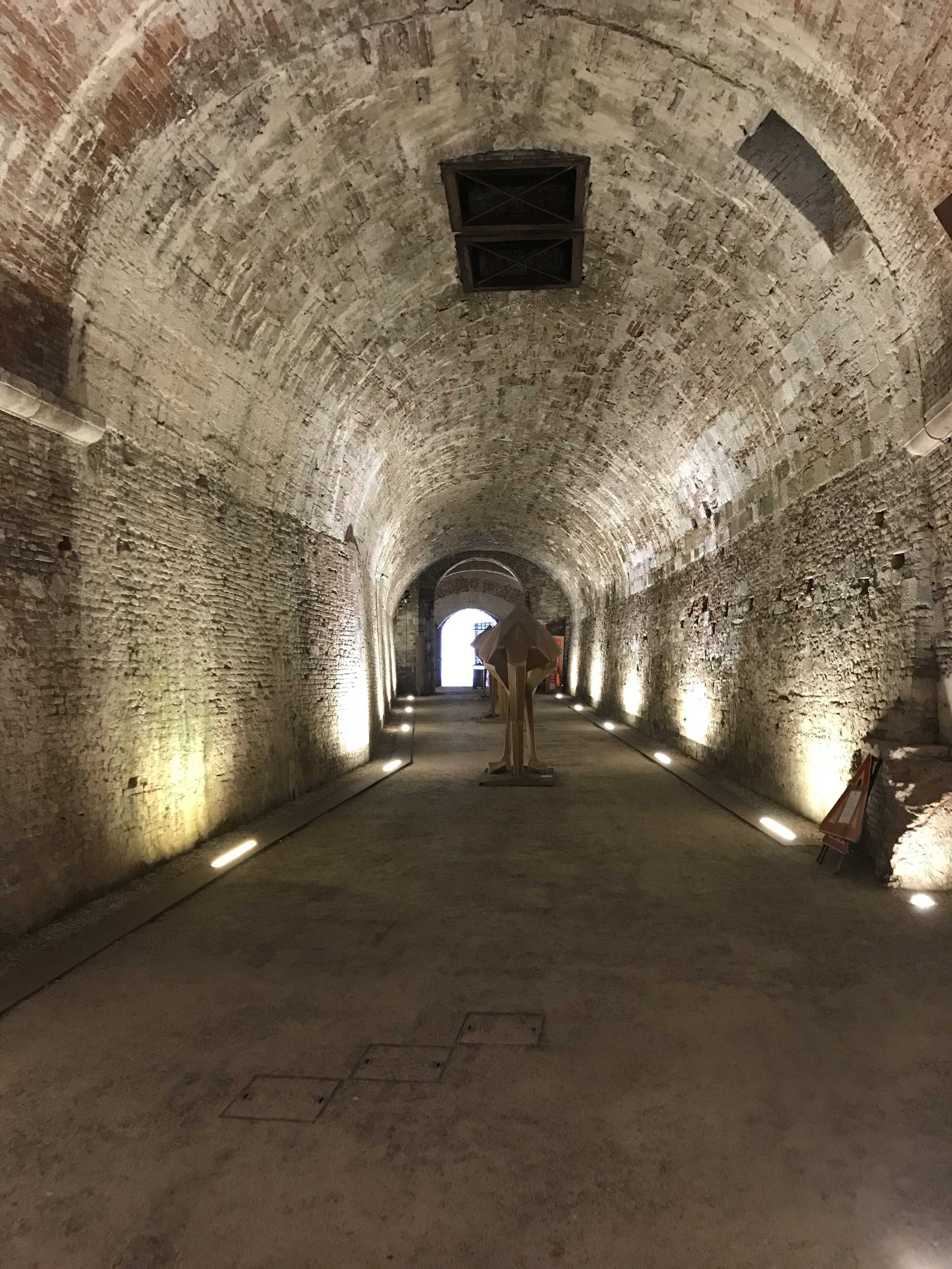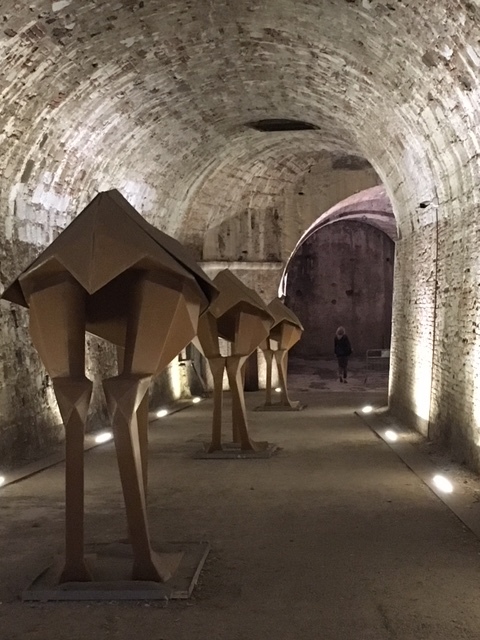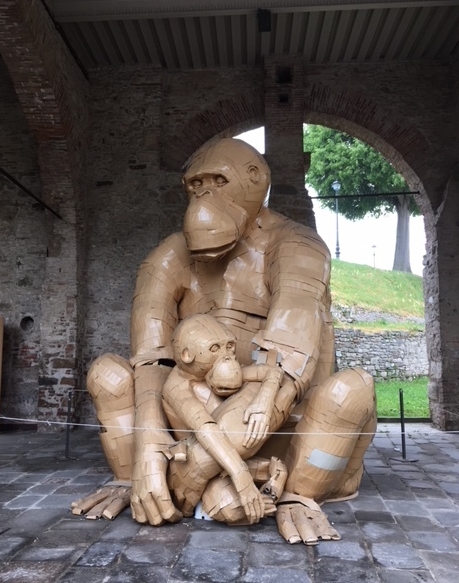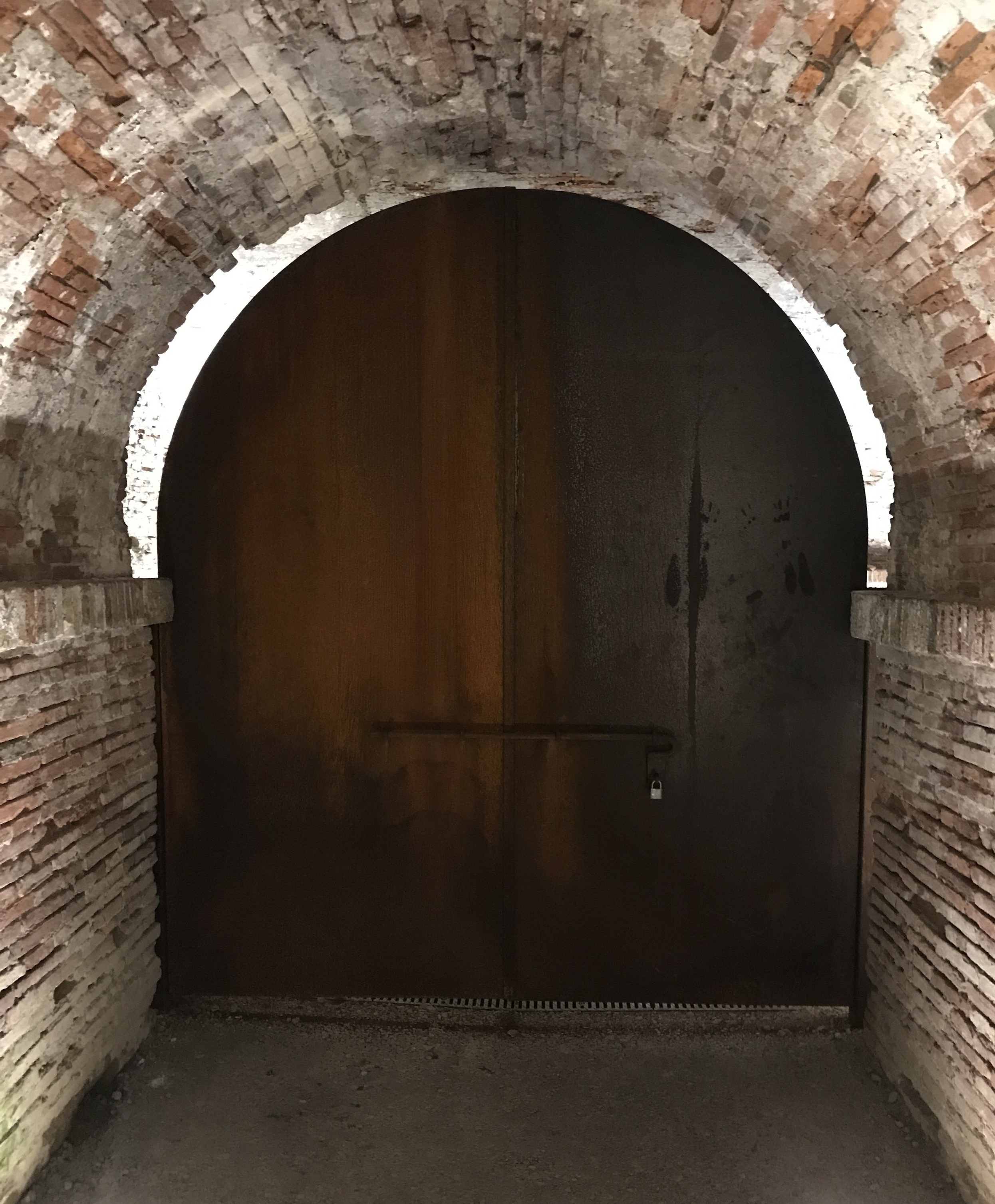Beneath the Walls of Lucca
When describing Lucca to people who have not yet had the good fortune to visit the city, le mura (the walls) are the first feature I mention. But underneath the walls is a whole other world.
Underneath the walls of Lucca.
The walls hold important historical significance, having originally been built as a defensive structure during the Renaissance (replacing the earlier Roman and Medieval walls). Today, they serve as a park and gathering spot for city dwellers and visitors and as a symbol of the city. They are also strikingly beautiful. Embracing the centro storico (historic old center), the walls were built with three portas or large entryways into the city (today there are six) and with 11 baluardi (baluardo in the singular, meaning a rampart or bastion). Each baluardo juts out from the narrower section of the wall and provides a direct line of sight from one to the next - a tactical advantage when defending against invaders. Today, the baluardi provide extended green spaces, filled with playgrounds, benches, and statues. At least, that's how it appears from the top of the walls. Underneath, however, is a much more mysterious place.
Beneath Baluardo Santa Croce, an exit through the walls.
In Renaissance times, the portions of the bastions lying under the walls, cavernous spaces with vaulted ceilings, would have held soldiers, horses, and the materials needed to wage battle against an invading army. The soldiers needed a way into these spaces from the city as well as a way out on the far side of the wall - such a passageway through a bastion is called a sortita ( like the French word "sortie" or exit). To prevent the invaders from using the sortita as a route into the city, they were designed as narrow, twisting passageways that could be easily defended. The passages were at one time mostly abandoned, but one by one, each sortita has been restored, and the result is breathtaking.
The gate at this sortita leads to the spalti (green spaces) outside the walls.
In contrast to bright Tuscan vistas, fellow walkers, trees, statues and bicyclists - the typical sights when atop the walls - I am often alone when in a sortita or with only a few other people around. In the sortita it is quiet, cool, and dimly lit. The views are of intricate brick and stonework, arched passageways, massive wooden doors and iron gates and - sometimes - art. Yes, art.
While these underground rooms and passageways are beautiful in their own right, the restored areas are now also used as spaces for exhibitions and events. On my most recent visit, tucked inside several of the sortite, I found paper sculptures from the Cartasia Biennale d’Arte 2016 exhibit. A pair of giant apes, multicolored spheres, head-in-the-sand ostriches, and the hoodie-covered head of a young man were among the paper art on display.
Yes, these colorful spheres are made of paper. According to one guide, they represent the cannon balls that were once stored here.
Cartasia Biennale d’Arte is a biennial exhibit of paper as an art form (paper production is a leading industry in the area around Lucca). The artists represent countries from around the world and their work is beautiful and infused with social and political meaning. During the exhibition, the paper pieces are displayed above ground throughout Lucca for two months. Afterward, the artwork is moved to the spaces under the walls, in part to protect the fragile paper construction from the elements. This unique “museum” is free and always open. The next exhibition will be held from July to September 2018, at which time the theme will be “Chaos and Silence.”
The curves and stonework, shadows and light, all add to the beauty of the underground passageways.
Silence is the music of the sortita. The restoration work included adding lighting, which shows off the beauty of the inner walls, illuminates the way through the passages and casts shadows that add to the atmosphere of the underground space. Aside from viewing the artwork and coming across an occasional other visitor, I spent my time simply wandering the halls. Of course, just like the aboveground walls, a sortita has a utilitarian function: It provides another way for pedestrians to enter and exit the historical center of Lucca.
For me, the wall above and the sortita below are examples of something I appreciate about Italy: preservation of the past in a way that enhances the present.
-post by JG (with an assist from JB)
At the end of a passageway is a beautiful wooden door.







